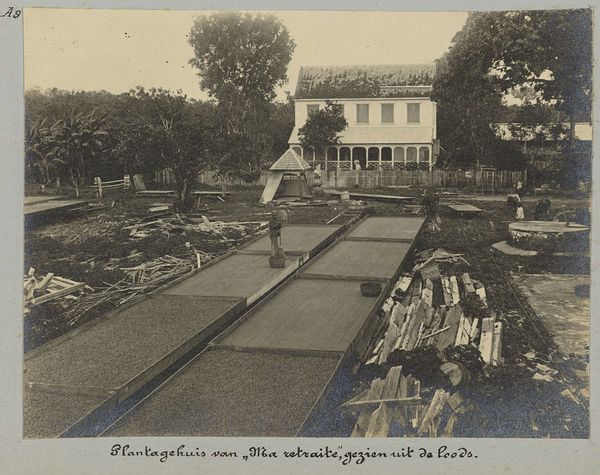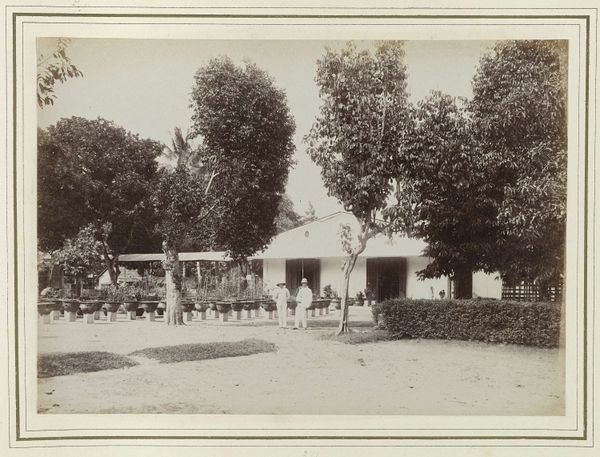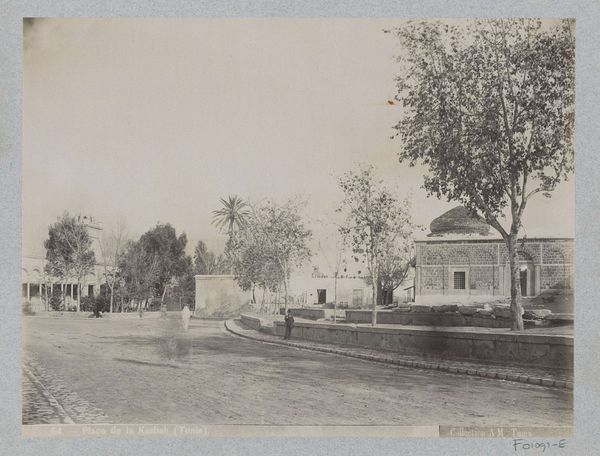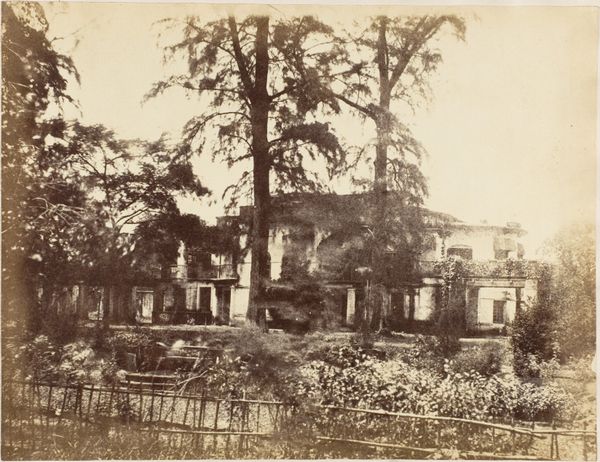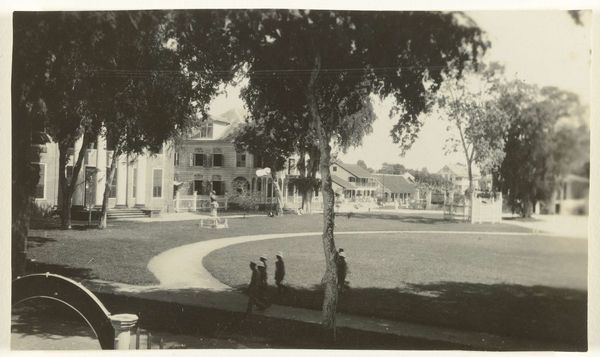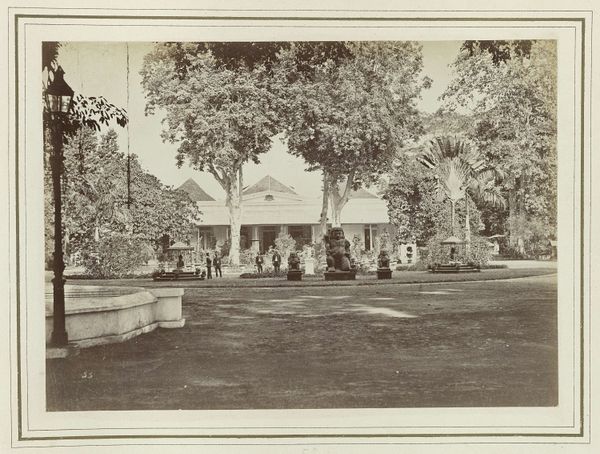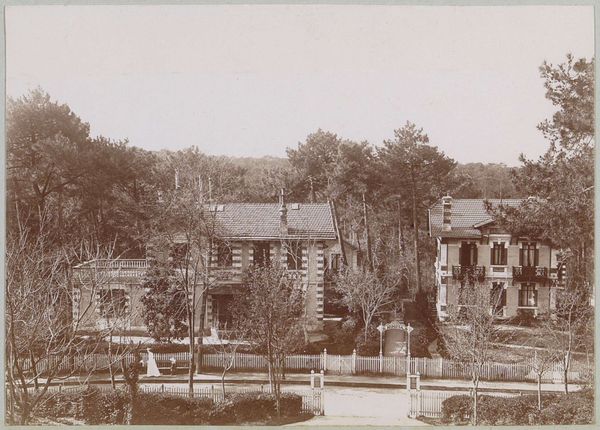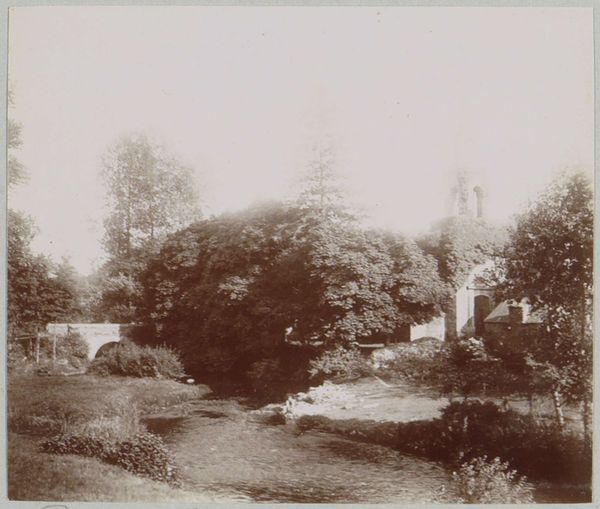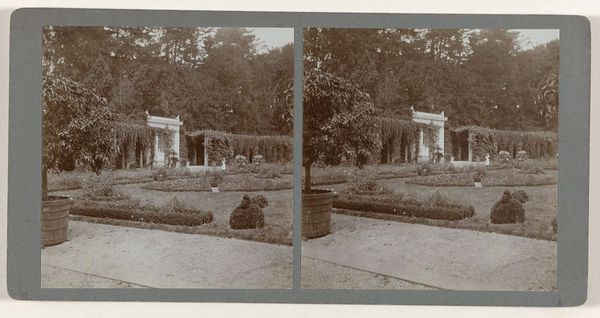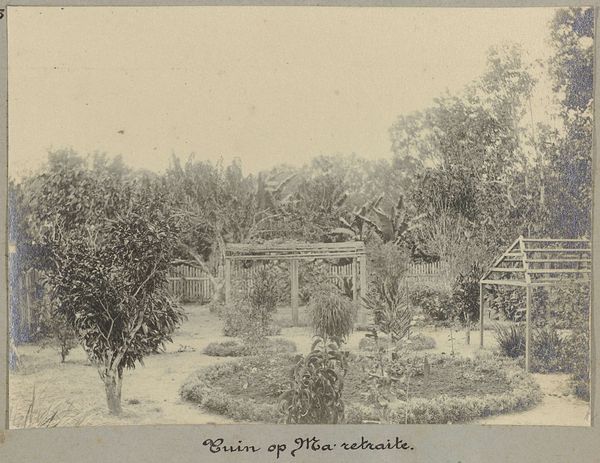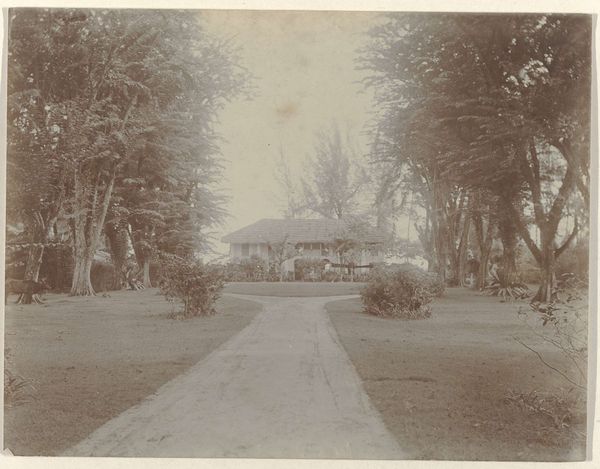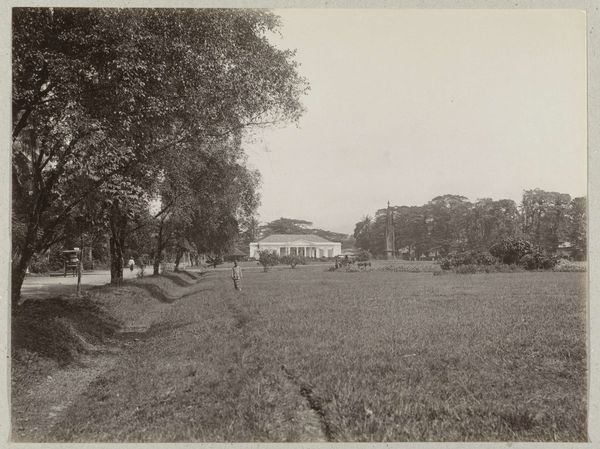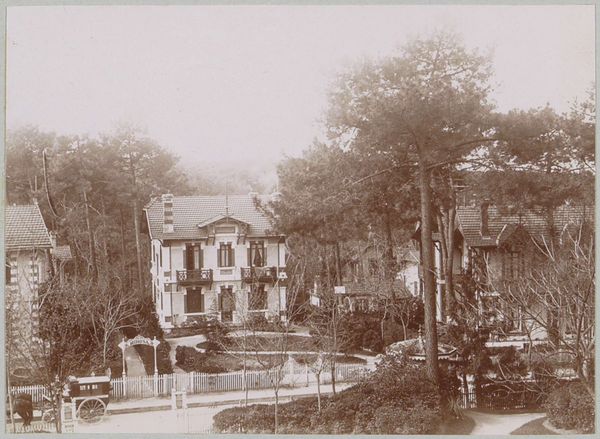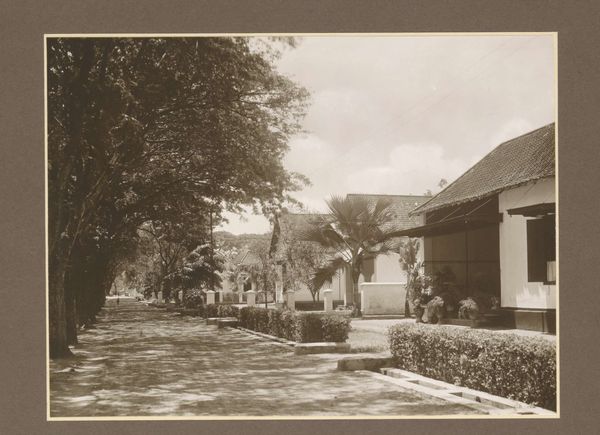
print, photography
# print
#
landscape
#
photography
#
realism
Dimensions: height 122 mm, width 170 mm
Copyright: Rijks Museum: Open Domain
Editor: Here we have Hendrik Doijer's photograph, "Ma retraite," taken sometime between 1903 and 1910. It looks like a landscape scene, maybe a farm or plantation, judging by the drying racks in the foreground. What do you see when you look at this piece? Curator: Well, the photograph offers a striking depiction of labor. Look at how the landscape is organised, almost gridded, for production. These meticulously prepared drying racks, most likely for coffee beans given the location and date, reveal a system of resource extraction. Notice the stark contrast between the raw materials being processed and the seemingly idyllic plantation house in the background. Editor: So, you're focusing on how the photo highlights the work involved in creating a product, and contrasting it with what appears to be leisure? Curator: Precisely. Photography as a medium here documents not just a landscape, but a social and economic structure. Consider the photographer's choices: why frame this particular view, emphasizing the labor process so clearly? How does this relate to the broader colonial context in which the photograph was made and distributed? Editor: That’s interesting; I hadn’t considered it in relation to colonialism. So, the “retreat” referenced in the title might be masking something harsher? Curator: Indeed. The notion of “retreat” could be understood as obscuring the realities of production, masking the labour conditions for the consumption habits of a global audience. The very materiality of this photographic print becomes evidence of this exchange. Think about where it might have been displayed and consumed back then and how that adds another layer. Editor: I see it now; the image reveals both a product and its production in a way I hadn't immediately appreciated. Considering labor, consumption, and colonial contexts definitely offers a much more complex reading. Curator: Exactly. By examining the processes, materials, and historical context of Doijer’s photograph, we can unveil deeper layers of meaning that go beyond just a simple landscape. It prompts questions about ethical consumption and historical exploitation that persist to this day.
Comments
No comments
Be the first to comment and join the conversation on the ultimate creative platform.
